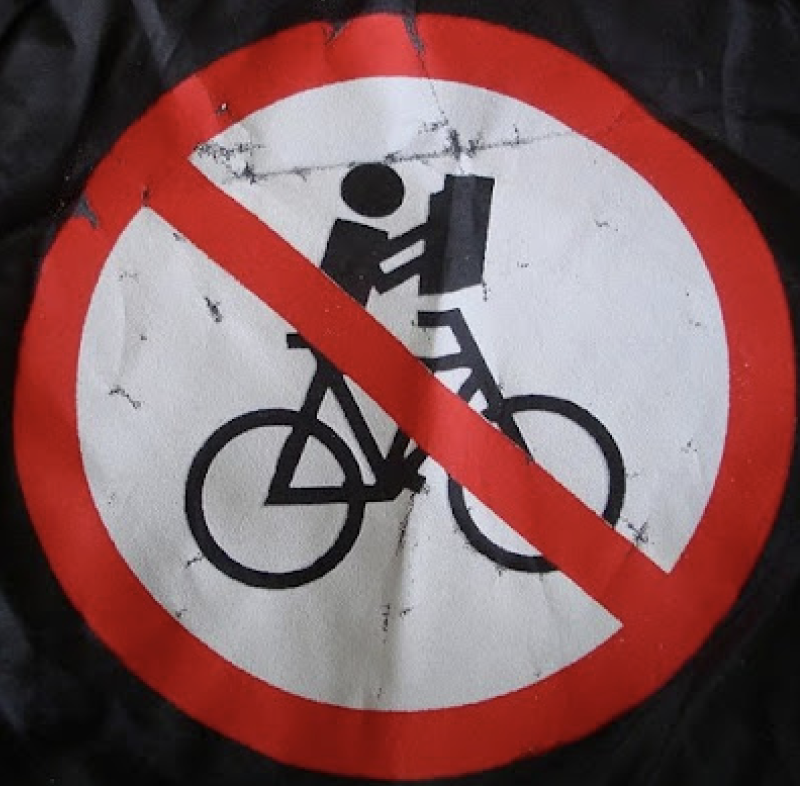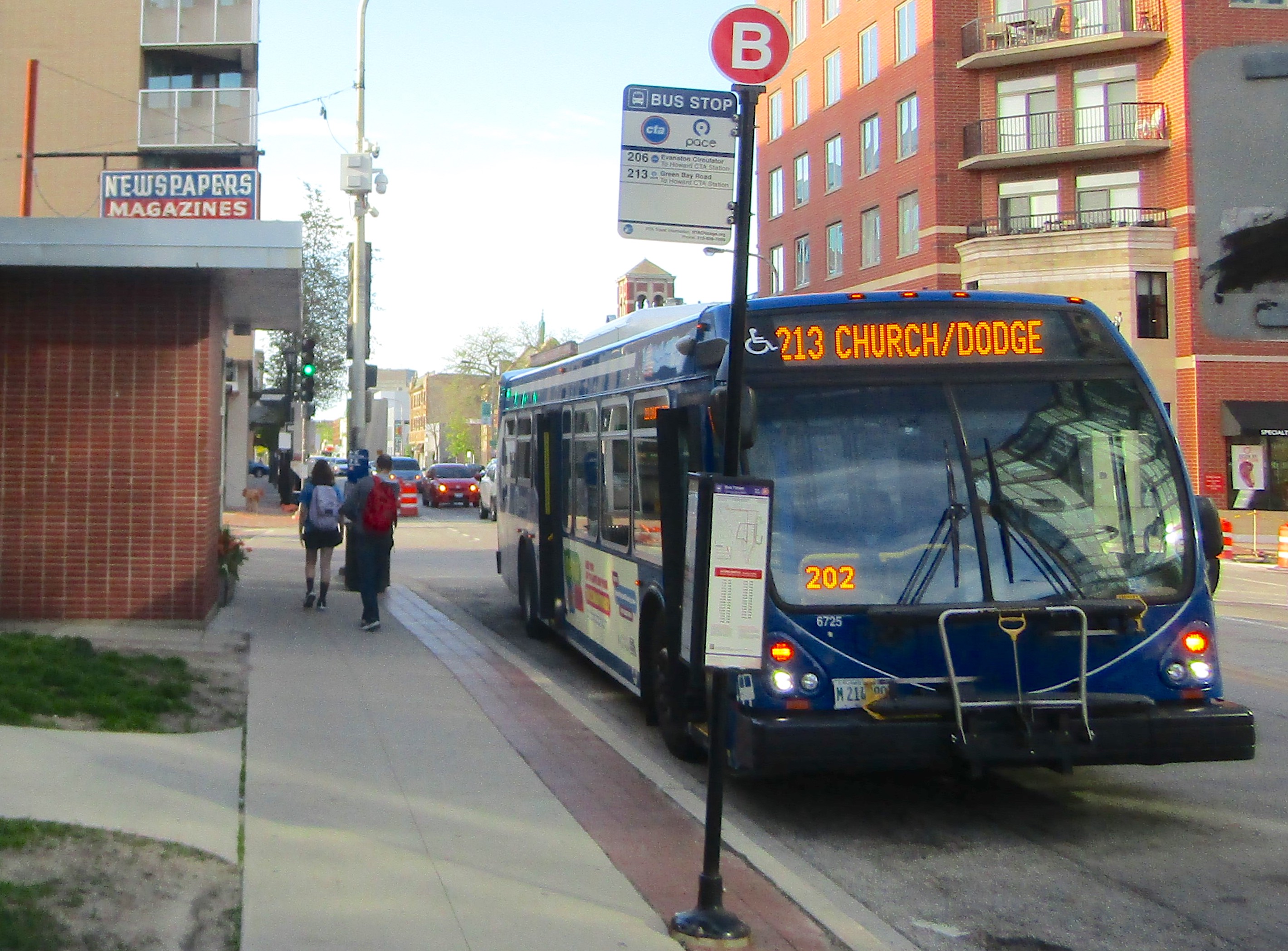Green light for the Red Line extension: TIF passes in committee, heads to full Council
7:01 PM CST on December 12, 2022
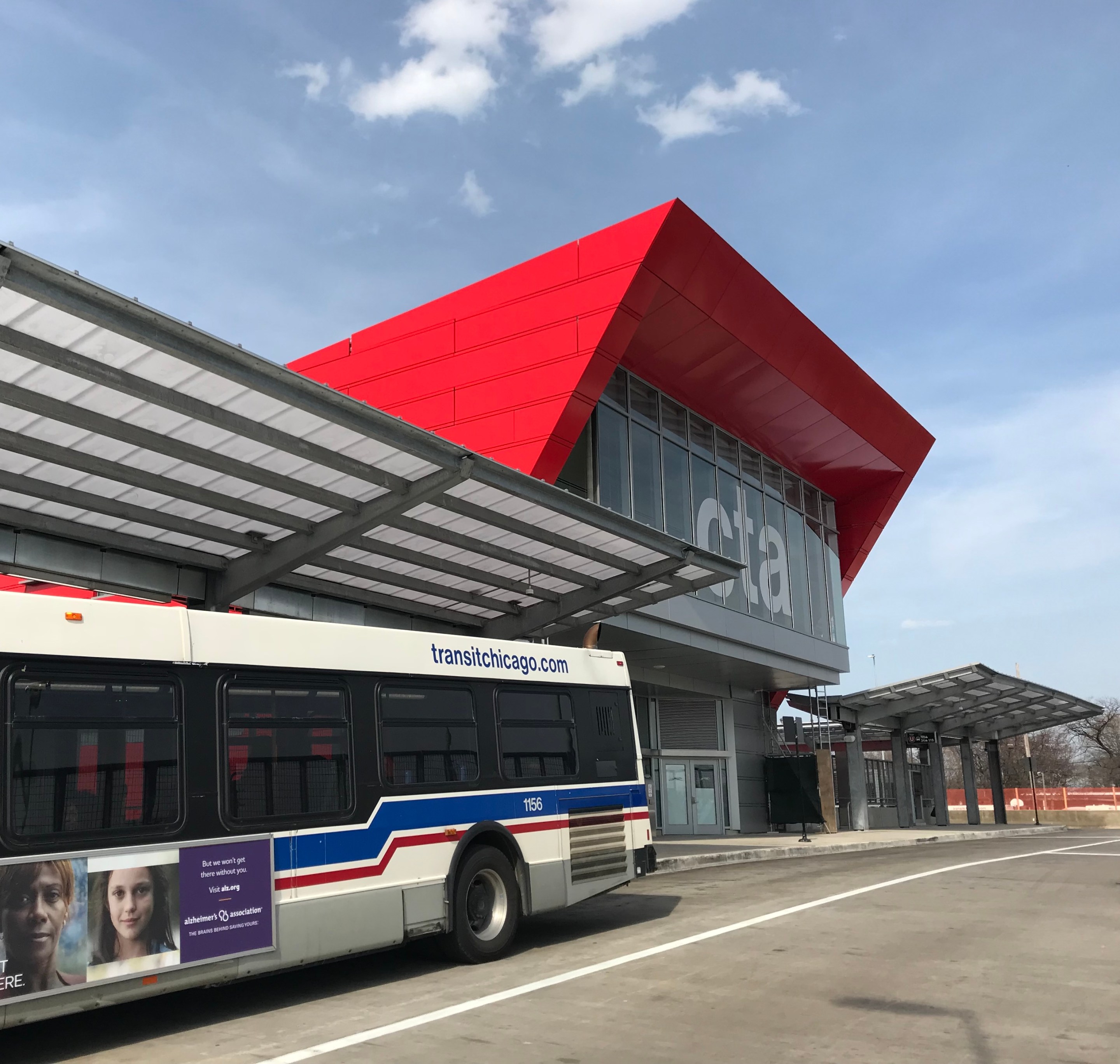
The southernmost existing Red Line station, 95th-Dan Ryan. Photo: John Greenfield
Despite previous pushback from alders, and after much discussion in today's City Council Finance Committee meeting, the proposed transit tax-increment financing district to help fund the south Red Line extension was approved by the committee in a nearly unanimous vote. The legislation heads to the full Council for a final vote on Wednesday.
The transit TIF would raise an estimated $959 million to help pay for the $3.6 billion 'L' extension, which would run 5.6 miles from the 95th-Dan Ryan station in Roseland to 130th Street in Altgeld Gardens, a predominantly Black, low-income area. The project, which was first proposed during the Richard J. Daley era, would cut an estimated half hour off a one-way train commute from 130th to the Loop.
The RLE funding mechanism has been more controversial than the transit TIF used to help pay for the $2.1 billion Red and Purple Modernization project on the North Side. Unlike regular tax-increment financing districts, transit TIFs don't divert property tax revenue from the Chicago Public Schools. But while the money raised by the RPM TIF goes back to that district, the RLE would capture revenue from relatively prosperous downtown and Near South Side neighborhoods, and redistribute it to the low-income Far South Side, making it a “Robin Hood” strategy, which some residents and politicians from affected areas have opposed.

On November 16 Mayor Lori Lightfoot formally introduced the proposed legislation including:
- The designation of a RLE Transit Facility Improvement Area, where TIF revenues could be spent on the project. The TFIA includes property located within one-half mile of existing and proposed Red Line right-of-way between Madison and 130th street.
- The designation of a RLE Redevelopment Project Area, where new property tax growth would provide TIF assistance for the project. The RPA includes 7,726 parcels on approximately 1,445 acres of land located within one-half mile of Red Line right-of-way between Madison and Pershing Road.
- The adoption of a RLE TIF Redevelopment Plan, which outlines the project scope, budget, and use of TIF funds.
Today's Finance Committee hearing started with public comment from advocates for the project. University of Illinois at Chicago transportation professor Kate Lowe noted that the extension "will bring investment to communities that face compounding systems of racism and disinvestment."
Lowe said that she and other research collaborators found that rail projects in African-American and Latino neighborhoods are cancelled more often that initiatives in majority-white area, sometimes due to issues with coming up with a local match for federal grants. She added that while the Red Line extension would most directly benefit Far South Siders, people will use the new service to commute to jobs that benefit other residents across the city.
Lowe also made the important point that, just because the RLE TIF money would come from downtown and the Near South Side, that does not mean it would deprive residents of those areas of property tax revenue that would otherwise necessarily be reinvested in those neighborhoods. Rather, that money would simply go into Chicago's general fund and could be spent anywhere in the city.
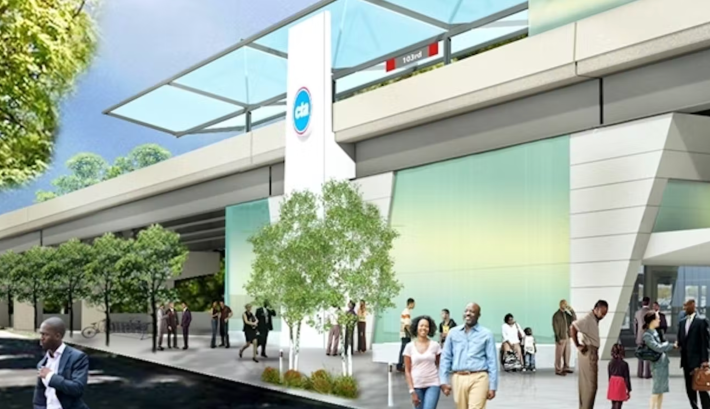
Streetsblog contributor Richard Day also made that argument in a Crain's op-ed published today. "The TIF argument is... a red herring. It wouldn't redirect money away from Bronzeville, but instead reduce future revenue flows to the city's general fund. As it stands today, taxes [that would be] collected in the proposed TIF area help pay for services citywide. If the TIF is approved, that contribution would be capped at current levels... That has the same impact on Bronzeville [one of the Near South communities that would be TIFed] – fewer dollars in the city's general fund—as it does on any other neighborhood."
"We support this transit TIF because it will provide rapid transit in an area of the city that has long awaited transportation investment," said the Active Transportation Alliance and the Metropolitan Planning Council in a joint statement read at the meeting by ATA executive director Amy Rynell. "In the case of the Red Line Extension, the wealth generation potential of downtown and the near south side is being used to finance investment in historically disinvested areas."
"This is a once-in-a generation opportunity to leverage increased federal funds offered by the Bipartisan Infrastructure Law to improve transit equity in Chicago and build on CTA’s years-long investment in this project," ATA and MPC added. The also noted that Chicago’s new Connected Communities equitable transit-oriented development ordinance creates more incentives for developers to build along the future rail line.
"This project is more than a transportation project," said Katanya Raby, director of planning at the Far South Community Development Corporation in a public comment. "It has the potential to change lives." She added that when she previously lived in the West Pullman neighborhood, poor transit access was a major challenge, one that continues to be an issue for he when she visits family and friends on the Far South Side.
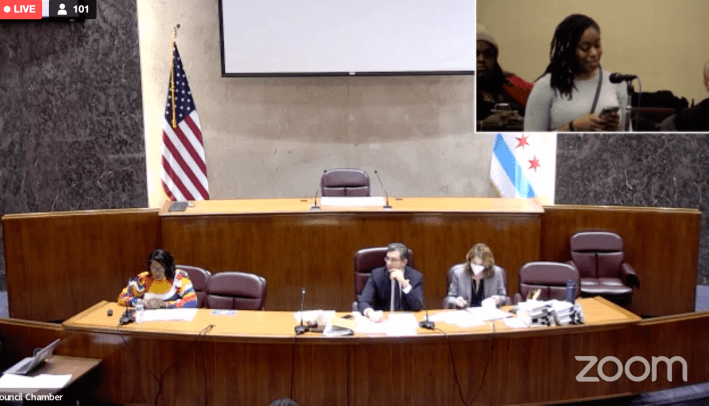
Altgeld Gardens resident Adella Bass-Lawson testified that when she attended Truman College in Uptown, her combined bus and Red Line commute took two hours each way, which was a factor in why she didn't finish her degree. "For decades the people in my community have been talking about the Red Line Extension." She noted that it will offer Far South Siders better access to education, jobs, and healthcare.
A few hours later in the daylong meeting, alderpersons had the opportunity to pose questions about the proposed TIF to CTA staff, including agency president Dorval Carter Jr. He recently provoked the ire of alders by skipping a Council hearing on unreliable transit service but, unsurprisingly, with nearly a billion dollars in the balance, he showed up for this one. (Last month Mayor Lightfoot, who's essentially Carter's boss, announced that he would meet with the Council's Transportation Committee on a quarterly basis from now on.)
Most alders voiced support for the Red Line extension and said they would vote for the transit TIF, although some pushed back a bit about the funding mechanism. For example, Southwest Side alderperson Ray Lopez (15th) asked whether Chicago's estimated $325 million annual regular TIF surplus could instead be used to pay for the project, but was told that isn't an option because that kind of TIF money must be spent in or near the district where it is generated.
Others asked why more money for the 'L' project won't be coming from the state of Illinois. Carter promised to lobby Springfield for assistance, arguing that, with 30 years of experience in transit, he's good at tracking down money for projects.
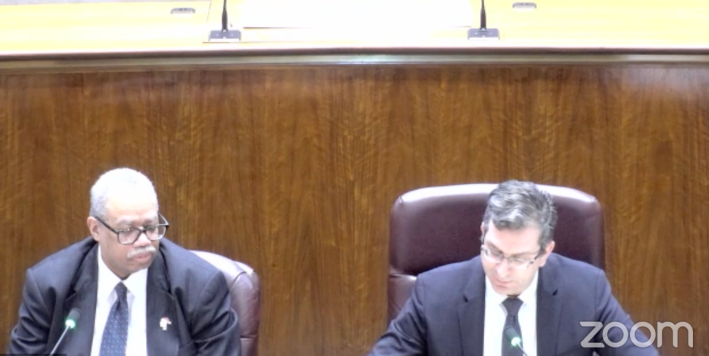
The most vocal opponent of the project was Near South alder Pat Dowell (3rd), whose district includes areas that would be TIFed. "I believe because the benefits [of the Red Line extension] are citywide, everyone needs to have skin in the game." She said a survey of 450 of her constituents found that while most supported the extension, the majority opposed the funding mechanism. She quoted one of the respondents: "When you take TIF money from one nabe and spend it in another, it really feels like theft. It feels lowdown and dirty."
Again, what those argument fail to acknowledge is that the tax revenue money that would be diverted by the TIF wouldn't otherwise be earmarked for downtown and the Near South Side – it could potentially be spent anywhere else in Chicago. In that since, residents everywhere in the city would have skin in the game, in that they'd be forgoing possible investments in their own neighborhoods in order to help out Far South Siders.
In the end all three aspects of the Red Line extension TIF legislation passed nearly unopposed in a roll call vote, with Dowell being the sole no vote.
To help ensure the measure passes the full Council on Wednesday, you can contact your local alderperson to ask them to support it.
In addition to editing Streetsblog Chicago, John writes about transportation and other topics for additional local publications. A Chicagoan since 1989, he enjoys exploring the city on foot, bike, bus, and 'L' train.
Stay in touch
Sign up for our free newsletter
More from Streetsblog Chicago
Elevated Chicago’s new leader on how to build more support for equitable transit-oriented development
Recently announced as executive director Juan Sebastian Arias also shared his POV on Mayor Johnson's Cut the Tape initiative to speed up the development approval process
Since COVID, Pace ridership has fared better on major corridors and in north, northwest suburbs than in south, west ‘burbs
The suburban bus system's top five busiest routes largely maintained their ridership rankings.
Due to incredible support from readers like you, we’ve surpassed our 2023-24 fundraising goal
Once again, the generosity of walk/bike/transit boosters is fueling our reporting and advocacy.

